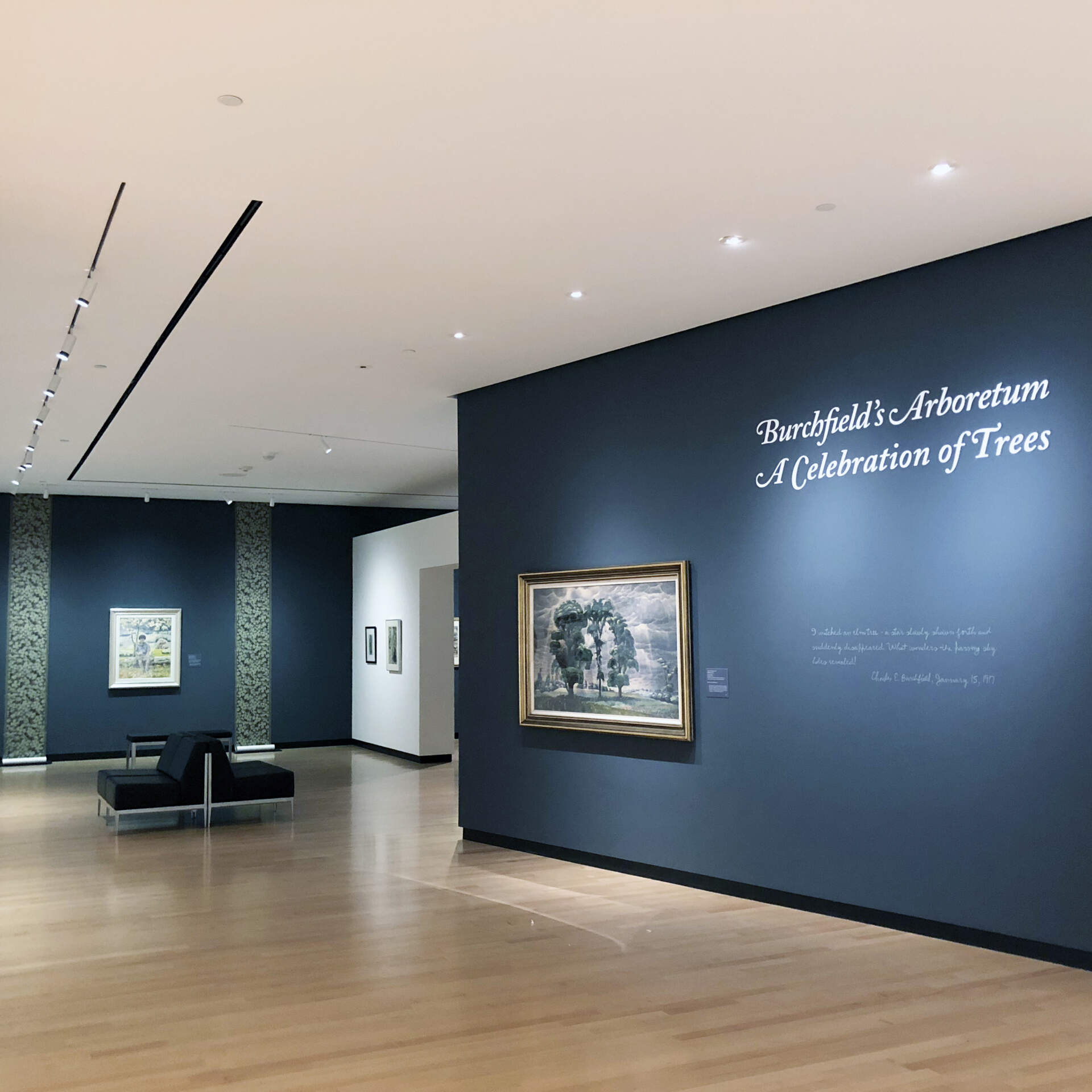
Burchfield's Arboretum: A Celebration of Trees
Past
Aug 10, 2018 - Dec 2, 2018
On November 2, 1914, Charles E. Burchfield wrote about a dream about a group of American elm trees that grew in Salem near his childhood home. “The Three Trees”, as they were locally known, would appear first in a sketch from July 2, 1915. He wrote:
I was at home and had gone up near the Three Trees. Here I came upon a thick screen of trees, penetrating which at a small open place I found myself in a wonderful scene. It was Summer, for there were many waving fields of wheat on all sides. All the trees and grass & wheat fields were a sparkling whitish blue-green; the sky was a vivid yellowish emerald, and running down from the zenith to the horizon in a curving line were a myriad sparkling stars.
These same trees would appear later in the masterwork of The Three Trees, 1932-1946. By the time the painting was finished, two of the trees were destroyed by a tornado and the third was cut down to make way for the construction of new houses. Decades later the American elm tree population would be decimated by Dutch Elm disease, a fungus spread by elm bark beetles.
In July of 1947, Burchfield went on a trip with his wife, Bertha that ended in Cook Forest, in Pennsylvania. After visiting and old growth section of the forest there, he wrote in his journal:
It is impossible for me to write here anything adequate about the beauty of Cook’s Forest. It was beyond anything I had ever imagined—I can think of nothing better than Longfellow’s impressive lines in the prologue to his Evangeline “This is the Forest Primeval”. The glory of these ancient gigantic hemlocks is beyond me to describe.[i]
Two years later in May of 1949 Burchfield wrote about another dream, this time lamenting the destruction of various kinds of trees.
Dream Fragment—In Salem—High Street—great open fields with gigantic trees, elms, buttonwoods and maples, with blue-jays flying about—It seemed as if someone on the excuse that the trees were a menace to surrounding houses had cut off the upper branches much to my disgust. The “scars” where even the highest branch were cut off, were as big as ordinary stumps.
A work from late in Burchfield’s life, Summer Solstice (In Memory of the American Chestnut Tree), 1961-1966, is a eulogy for a lost giant The American chestnut was devastated by a fungus, which was accidently introduced into North America in the first decade of the twentieth century. A revealing journal entry from 1962 explained part of his “expansion process” for this painting:
I added (with clips) 4 inches of white board, and extended the tree upward. The effect was dramatic. … Only 4 inches but it seemed as if the heavens were brought into it, and as if, at last I might be able to paint a picture with “Presence of God” in it. Is it too much to hope for?
The exhibition Burchfield’s Arboretumis a celebration of Burchfield’s love of trees. As part of this project, the Burchfield Penney Art Center is collaborating with the Friends of the Maude Gordon Holmes Arboretum, a group committed to expanding the arboretum, founded in 1962, on the campus of SUNY Buffalo State. The Center’s founding curator/director Edna M. Lindeman was instrumental in the establishment of the arboretum, and Charles Burchfield himself took part in planting one of the original trees.